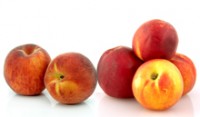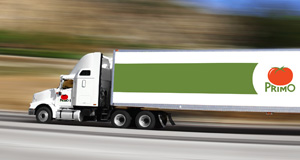
June 2 – 8, 2013
Market Outlook
Lettuce:
Supplies remain plentiful, with quality very good overall.
Leaf:
Romaine / leaf market is steady with good supplies and quality.
Broccoli:
Broccoli market is steady. Quality remains good.
Cauliflower:
Cauliflower market is stronger with good quality.
Carrots:
Market on carrots will be up next week as the Georgia season comes to a short end.
Celery:
Market remains has softened. Salinas to begin around June 10.
Strawberries:
We are having good arrivals on California fruit. Market is steady.
Potatoes:
Idaho market is still climbing and product is very short. At this time we are giving a full week just to get product rolling. #2 market has tightened up, product very short.
Onions:
Onion market is coming out of Texas now, with price increasing slightly again this week.
Citrus:
Market is steady to up slightly on both lemons and oranges. Smaller oranges, (113’s and smaller) are in very short supply.
Cucumbers:
The market on cucumbers is steady, quality getting much better now that Georgia has started up.
Peppers:
Market is steady on peppers. Quality has been getting better.
Tomatoes:
Tomato market is steady on rounds, however product is scarce. Plums, Cherries and grapes are steady.
Freight rates out of California remain strong.
Feature of the Week
This week Primo is featuring peaches and nectarines! There are hundreds of different peach varieties, which can be divided into two categories–the freestones and the clingstones. In freestone types, the flesh separates readily from the pit. In the clingstone type, the flesh clings tightly to the pit. The flesh may be either yellow or white. Freestone types are usually preferred for eating fresh or for freezing, while clingstone types are used primarily for canning. Nectarines may be either yellow or white-fleshed. Nectarines can be used in the same way as peaches, and may be considered as substitutes for peaches. The main difference between peaches and nectarines is the lack of fuzz on the nectarine skin. Nectarines tend to be smaller and more aromatic than peaches and have more red color on the fruit surface.
Recipe of the Week
1 1/4 lb. nectarines and peaches – about 2 each
1 Tbsp fresh lemon juice
1 1/4 cup sugar
1 stick (1/2 cup) unsalted butter, melted
1 cup flour
1 Tbsp baking powder
1/4 tsp salt
1 cup whole milk
Preheat to 375 with rack in middle position. Score fruit by cutting an X on the bottom of each. Blanch in boiling water 10 seconds, then transfer with slotted spoon to bowl filled with cold water. Once cool enough to handle, peel off skin, starting from X and discard. If the fruit is ripe, the skin will just slide off. If not, remove the rest of the skin with a peeler. Halve and pit the fruit; cut into real thin slices. Transfer fruit to heavy saucepan and add lemon juice and 1/2 cup sugar. Bring to a boil over high heat, stirring constantly, then boil, stirring occasionally, 4 minutes. Remove from heat. Pour melted butter into 13×9 or 12×7 glass baking dish (if you use the smaller dish, put a cookie sheet in the rack underneath it to catch what might boil over). Whisk flour, baking powder, salt and remaining 3/4 cup sugar in a bowl, then whisk in milk until combined until the consistency of pancake batter. Pour batter over butter. Do not stir. Then pour fruit over batter. Again, do not stir. Bake till cobbler is bubbling and top is golden brown, about 40-45 minutes. Cool in pan until warm. Serve topped with whipped cream.
Serves 8-10.
Fun Facts of the Week
- Peaches are a good source of vitamins A, B and C. A medium peach contains only 37 calories.
- Nectarines are a variety of peach with a smooth skin, not a cross between a peach and a plum.
- The term, “you’re a real peach” originated from the tradition of giving a peach to the friend you liked.
- Nectarines likely originated in China over 2,000 years ago. They were grown in ancient Persia, Greece, and Rome. The Spanish introduced nectarines to the United States.


